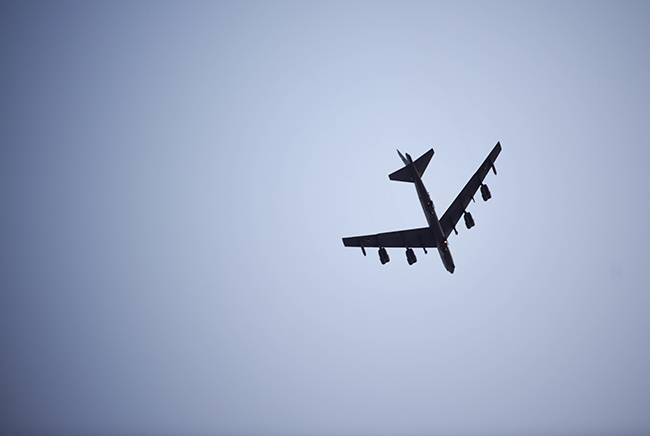
A U.S. B-52H Stratofortress aircraft assigned to the 20th Expeditionary Bomb Squadron comes in for a landing at Al Udeid AB, Qatar, on May 8, 2019. Air Force photo by SSgt. Ashley Gardner.
US Central Command has called for increased intelligence, surveillance, and reconnaissance to watch over Iranian-backed forces and more air support “in the event of an attack” after intelligence showed a campaign of threats from Iran, top US military officials said May 29.
Acting Defense Secretary Patrick Shanahan, speaking to a small group of reporters en route to Indonesia, said the undisclosed intelligence of threats showed “an anomaly,” calling for a quick response within hours earlier this month. The US military initially deployed a task force of four B-52s and the USS Abraham Lincoln Carrier Strike Group to the Middle East in response to undisclosed threats from Iran, and has since added a fighter squadron, a Patriot missile defense battery, and undisclosed ISR aircraft to these deployments.
The deployments already have made an impact, said Shanahan, noting, “It deterred attacks on our people in Iraq.”
CENTCOM in early May requested an increased force protection in four areas: ISR, air support, missile defense, and the addition of engineering battalion to harden facilities, said Shanahan, who noted the command wanted “to be more conservative.”
The new forces have deployed to Saudi Arabia and Qatar, he said.
Chairman of the Joint Chiefs of Staff Gen. Joseph Dunford, speaking May 29 at the Brookings Institution in Washington, D.C., said intelligence in recent years has consistently shown a stream of threats emanating from Iran.
However, the intelligence earlier this month was different because it showed “multiple threat streams all, perhaps, coming together.” There was a “pattern of threats,” including in Iraq, in Yemen, and in the Persian Gulf, which have since shown to be accurate with attacks on ships in the Gulf and rocket attacks near the US Embassy in Baghdad, he said.
“We saw something that was more like a campaign than an individual threat,” Dunford said.
The deployed capabilities are not offensive, but “are designed to protect our people,” Dunford emphasized.